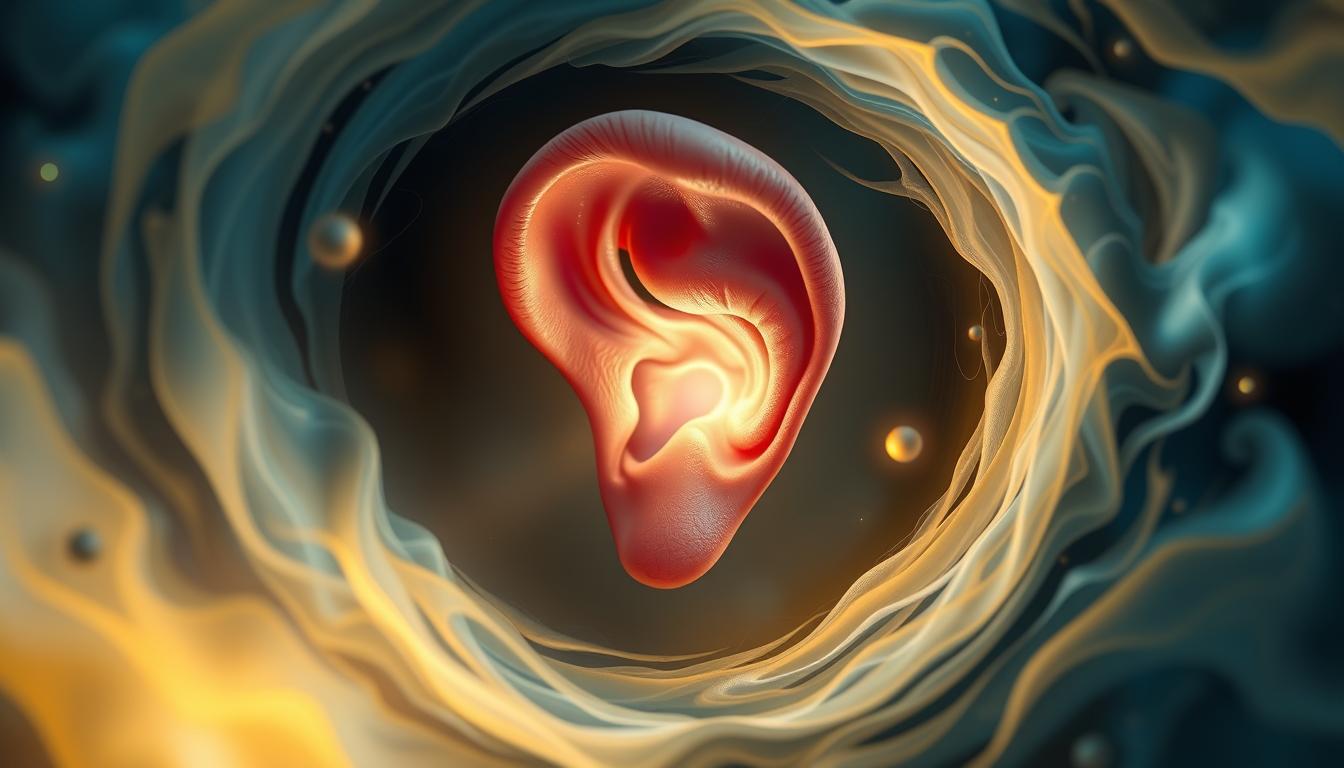Have you ever experienced an unusual rumbling noise in your ear? This peculiar sensation is often overlooked, yet it can be indicative of underlying issues related to your ear health. Rumbling in the ear is not simply an oddity; it may signify a protective mechanism employed by your body. This phenomenon commonly involves the activation of tiny muscles, including the tensor tympani, designed to shield you from loud sounds. However, it can also serve as a warning sign of conditions such as tinnitus, Meniere’s disease, or ear infections. In this article, we’ll delve into what causes rumbling in your ear, its connection to various ear symptoms, and explore effective strategies for treatment to ensure optimal ear health.
Understanding Rumbling in Ear
Experiencing rumbling sounds in your ear can raise many questions. You might wonder about the underlying mechanisms causing these ear noises and their relation to your overall ear health. Understanding the causes of ear rumbling can help demystify this common phenomenon.
What Causes Rumbling in Your Ear?
Rumbling in your ear may stem from various sources. Conditions like allergies contribute significantly, with researchers suggesting they cause around 65-75% of Eustachian tube dysfunction cases, leading to a vibrating sensation. Loud noises can also affect your hearing, inducing temporary threshold shifts in 20-30% of individuals, while approximately 5-10% may experience permanent changes. In rare cases, middle ear myoclonus affects less than 1% of the population, delivering fluttering sounds and vibrations.
The Protective Role of Tensor Tympani Muscles
The tensor tympani muscle plays a crucial role in guarding your hearing. It involuntarily contracts to reduce damage from loud sounds, dampening vibrations transmitted to the eardrum. Interestingly, some individuals can voluntarily contract this muscle, inadvertently generating low, thunder-like sounds in their ears. This muscle tenses when you yawn, chew, or cough, revealing its essential function in regulating sound in ear experiences.
Relation to Tinnitus and Other Sounds in Ear
Tinnitus often shares a connection with rumbling noises. Tinnitus can manifest as ringing, hissing, or occasional roaring sounds, affecting around 10-15% of individuals with pulsatile tinnitus. Furthermore, head trauma can lead to tinnitus symptoms, affecting 3-5% of cases and resulting in additional issues like dizziness and headaches. Ear infections can also give rise to these sensations, contributing to the complexity of sounds in the ear.
| Cause | Percentage of Cases | Description |
|---|---|---|
| Allergies | 65-75% | Leading to Eustachian tube dysfunction and vibrating sensations. |
| Loud Noise Exposure | 20-30% (temporary), 5-10% (permanent) | Shifts in hearing thresholds after exposure to loud sounds. |
| Middle Ear Myoclonus | Less than 1% | Rarely causes fluttering sounds in the ears. |
| Pulsatile Tinnitus | 10-15% | Related to heartbeat and may include vibration and noise. |
| Trauma | 3-5% | Head and neck injuries linked to tinnitus and related symptoms. |
Rumbling in Ear – Symptoms and Diagnosis
Recognizing the symptoms linked to rumbling in your ear is crucial for effective treatments. You may experience various rumbling symptoms, including sensations of fullness in the ear, dizziness, and the perception of unusual sounds. Such symptoms can vary in intensity and duration, often leading to discomfort or distractions in daily tasks.
Common Symptoms Associated with Rumbling
Some of the common signs you might notice include:
- Sensation of fullness in the ear
- Dizziness or unsteadiness
- Unusual noises or ringing
- Difficulty concentrating or sleeping
If you notice any additional ear infection signs, like fever or persistent balance problems, it is advisable to seek medical attention. These could indicate underlying issues that need prompt intervention.
When to See a Doctor
Consult a healthcare provider if:
- You experience severe or prolonged rumbling sensations
- You develop additional symptoms such as significant dizziness or fever
- Your symptoms disrupt your normal activities significantly
Proactive ear care can prevent complications and promote better understanding of your symptoms.
Diagnostic Tests for Ear Conditions
Various diagnostic tests can help determine the root cause of your symptoms. These may include:
| Test Type | Description |
|---|---|
| Hearing Tests | Evaluate the ability to hear different sounds at various frequencies. |
| CT Scans | Imaging studies that highlight structural anomalies in the ear. |
| MRI Scans | Illustrate soft tissue structures, helping assess any nerve or tissue related issues. |
Understanding these procedures can guide you in making informed decisions about your hearing health. Staying aware of and addressing your symptoms can significantly impact your quality of life.

Conclusion
Understanding the causes and implications of rumbling in your ear is vital for effective management and treatment. Millions of people worldwide experience strange sounds in their ears that may range from harmless to indicative of more serious conditions like Meniere’s disease. Recognizing the symptoms associated with these issues can significantly enhance your ear health, making it essential to consult healthcare professionals when experiencing persistent discomfort or changes.
You should be aware that conditions such as tinnitus, which affects between 8% to 25.3% of the U.S. population, can often accompany ear rumbling. With numerous potential causes, including exposure to loud noises, aging, or even certain medications, staying informed about your ear pressure relief and earache prevention strategies is crucial. Furthermore, early intervention often leads to more effective treatment and better long-term outcomes for your auditory well-being.
Additionally, employing various treatments—from cleaning your ears and addressing infections to managing muscle spasms—can offer substantial relief. Devices such as modern hearing aids even incorporate tinnitus masking to help mitigate symptoms. Prioritizing your ear care can safeguard against potential issues, contributing positively to your overall quality of life and reinforcing the importance of regular check-ups to monitor your ear health.
